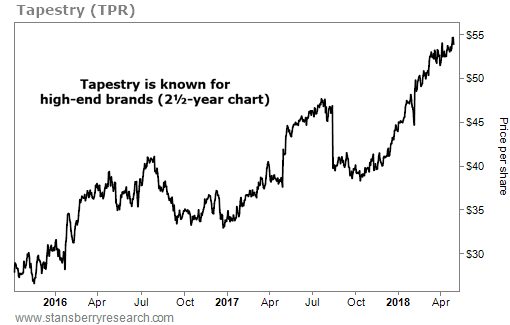Have you ever tossed and turned at night, worrying that a presentation the next morning would go terribly wrong?
Have you ever lost sleep worrying about tomorrow's meeting – and if your client was going to ask you a question that you couldn't answer?
If you have, then you know that most of what keeps you up at night doesn't actually come true.
The same is true in the markets... The fear that keeps investors up at night is usually less likely than they expect. And right now, that idea is setting up a massive contrarian opportunity.
Let me explain...
Yesterday, I told you that fund managers are scared of stocks. That tells me we haven't seen the ultimate top yet. But stocks aren't the only thing fund managers are worried about...
In recent months, their biggest fear has been rising interest rates. That's what's been keeping them up at night.
According to the February Global Fund Manager Survey, those surveyed said "inflation or a bond crash" were the biggest "tail risk" fears in the markets. (A tail risk is the kind of event you might not see coming... but it could have catastrophic results.)
The question is: should we be worried about what's keeping fund managers up at night?
Based on history, the answer is "no." In fact, based on history, we should exploit their biggest fears for profit – because they usually don't come true.
Consider what happened to a few of those recent "biggest fears"...
In early 2017, fund managers in the survey said the biggest tail risk was the collapse of the European Union.
Despite those fears, European stocks soared in the months that followed. The MSCI Europe Index is up 27% since the beginning of 2017.
The same thing happened with the euro.
When fund-manager fear was high, the euro fell to its lowest level since 2003... The euro started 2017 at €1.05 to the dollar, when fear was at an extreme. It then soared to €1.25 to the dollar in February 2018.
This tail-risk fear turned out to be the exact opposite of what happened. And that's not the only time it's worked that way...
Chinese stocks crashed from mid-2015 to early 2016, losing more than a third of their value. By late 2015, fund managers in the survey said the biggest tail risk was a Chinese recession. And it hung around as their biggest fear for months.
The worry was that a stock market crash could ignite a full-blown recession. They were wrong...
The MSCI China Index is up 57% since the end of 2015.
The point is, the biggest fear that's keeping investors up at night usually doesn't come true. And it often signals a major contrarian opportunity.
Lately, fund managers see inflation and higher interest rates as the biggest tail risks. Nobody believes lower rates are possible.
As a contrarian, I love to see this kind of situation... when the entire investing world agrees on a conclusion. It rarely works out. The exact opposite of that consensus tends to happen instead.
Interest rates have been on the rise. Ten-year government bonds broke 3% for the first time in years last week. But history tells us the run-up could be ending soon.
Rising rates are keeping investors up at night... But we shouldn't worry about their biggest fear.
The massively contrarian bet on lower interest rates is the smart bet from here.
Good investing,
Steve
P.S. If market fears are keeping you up at night... please join us on May 10 for a free special event. My friend Dr. Richard Smith will walk you through a simple system that can help you make more from your investments, with less risk. I'll be speaking too... And I can't wait to talk about how this strategy works with my "Melt Up" thesis. Click here for more details.
Further Reading
Steve takes on the fund managers' biggest fears – and reveals what his "early warning indicators" are saying about the market's vitals today. Check it out right here: 'The Silence of the Bulls': Fund Managers Are REALLY Scared Right Now.
"Investment managers are at their most bearish since 2016," Brett Eversole says. As he explains, this fear opens up more contrarian opportunities today... Learn more here: Here's Why We Haven't Seen the Top in Stocks.
Right now, you want to bet on lower interest rates... and higher bond prices. And this fund is our favorite way to make the trade – with leverage...
A LESSON IN BRAND RESTORATION
Today, we're taking a look at a company whose turnaround has gone according to plan...
We're talking about luxury handbag maker Tapestry (TPR), formerly known as Coach. Back in 2014, new CEO Victor Luis had his work cut out for him. At the time, Tapestry's brand had suffered from relying heavily on promotional sales and opening too many stores, flooding the market with cheaper goods. It's a classic example of how the right leadership can transform a struggling company...
Luis got to work. He closed outlet stores and revamped struggling locations. Tapestry bought high-end brands Stuart Weitzman and Kate Spade, which have helped buoy its status despite headwinds facing the retail sector. Plus, international sales have grown to around 45% of sales, compared with just 30% five years ago.
As you can see in the chart below, Tapestry shares nearly doubled over the past two and a half years. During this time, the "death of retail" has plagued many well-known retailers like Macy's (M) and Nordstrom (JWN). But thanks to a successful turnaround, Tapestry continues to buck the trend...



